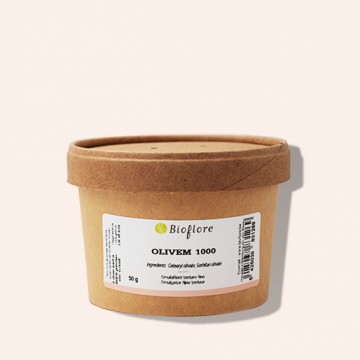Olivem 1000 emulsifier
Olivem 1000 emulsifier
Derived from olive oil, it makes it easy to create fine, penetrating emulsions that have a perfect affinity with the skin.

Derived from olive oil, it makes it easy to create fine, penetrating emulsions that have a perfect affinity with the skin.
Adopt the routine Adopt also
INCI: Cetearyl olivate, Sorbitan olivate
Cosmos approved
Emulsifier derived from olive oil allowing the easy creation of very fine and penetrating emulsions with textures in perfect affinity with the skin. It will bring an emollient and moisturizing effect as well as a silky touch to your creams.
Available at
We offer Point relais delivery:
Products are delivered to the relay point of your choice within 3 working days from the day of dispatch (indicative time for Belgium).
For home delivery, delivery costs are free:
Products are delivered to you within 2 working days from the day of dispatch for Belgium, and within 3 to 5 working days, from the day of dispatch for Europe.
Other European countries and the rest of the world, including French overseas departments and territories, Turkey, Ukraine:
Roman Chamomile Hydrosol - Organic
Soothing lotion from the earliest age
Grade : 4/5
2 reviews
You are the ones who speak best about our products!
Requires you to log into your account

Your review appreciation cannot be sent
feedback Report comment
Report sent
Your report cannot be sent
Write your review
Review sent
Your review cannot be sent


0 reviews